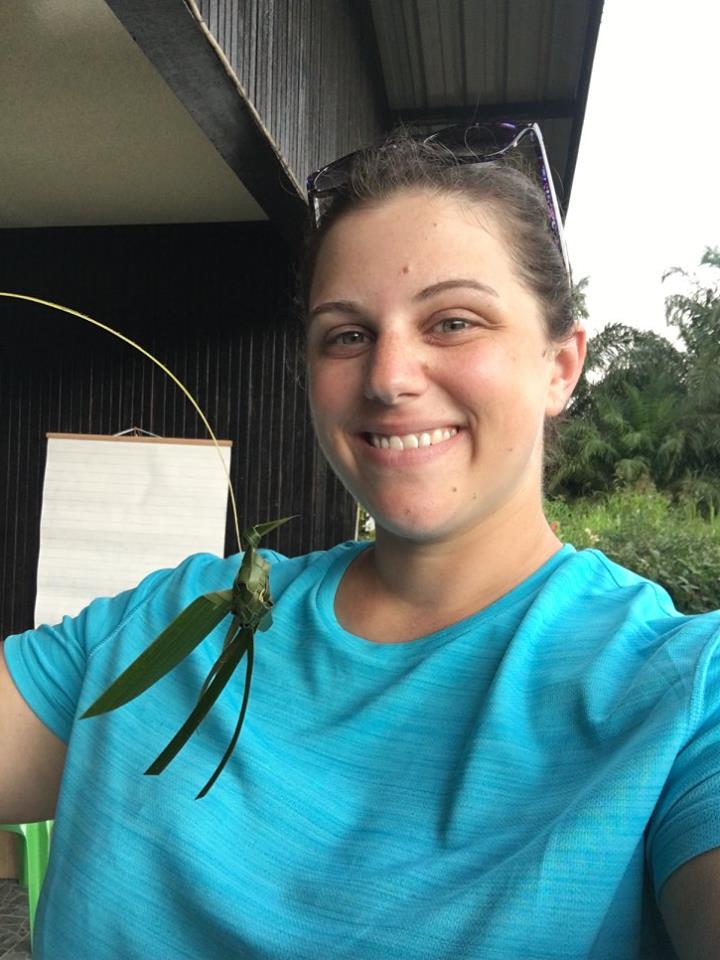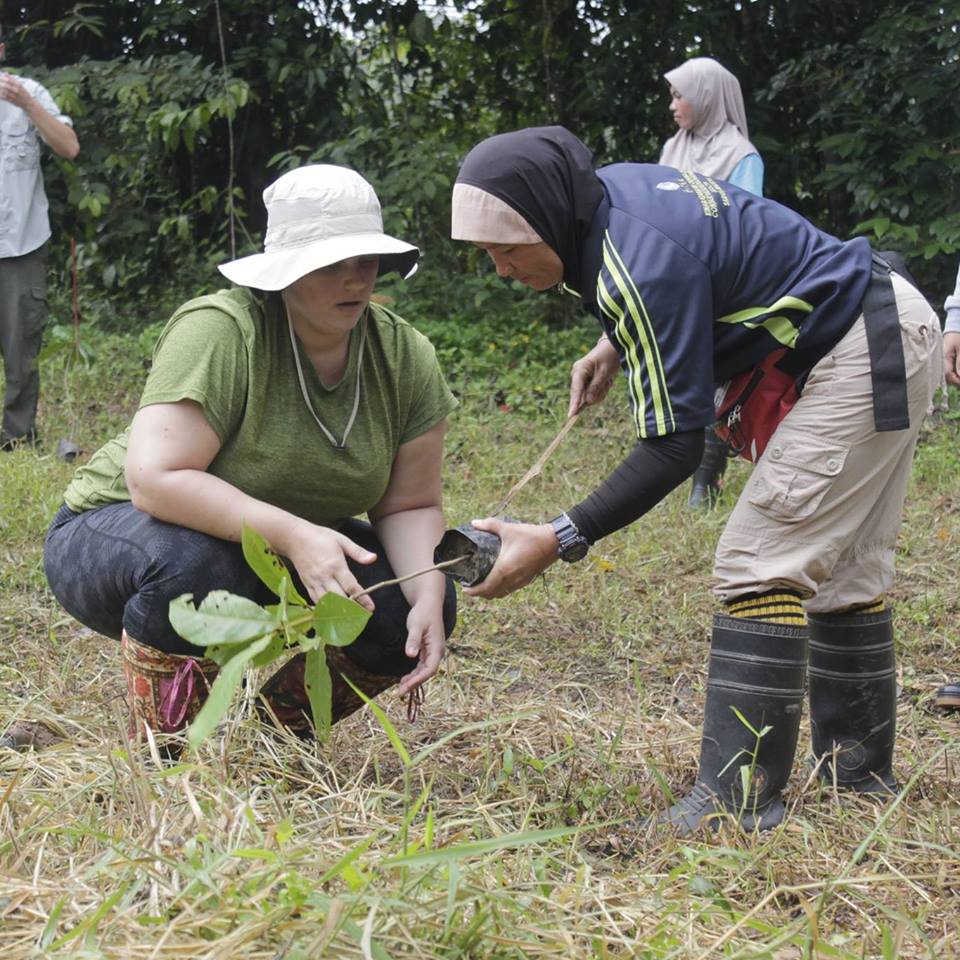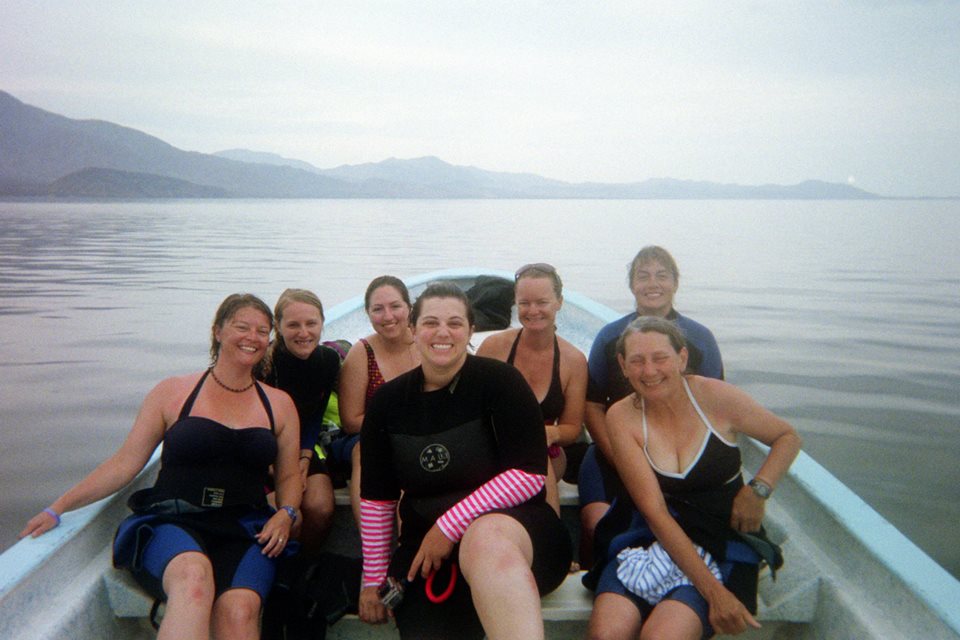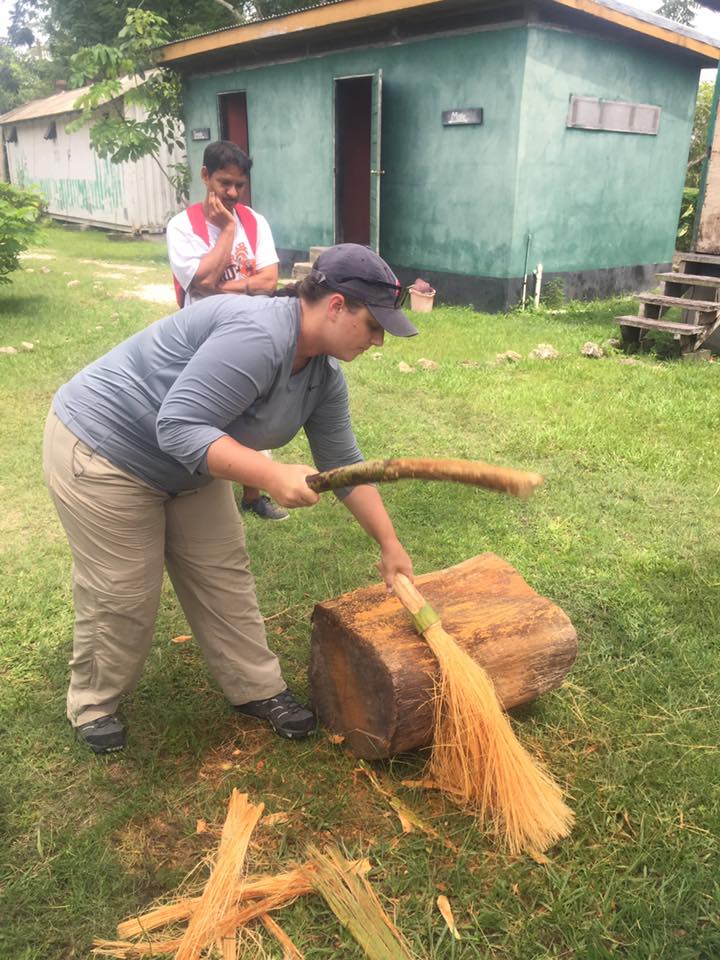With the gray days and cold temperatures in Ohio, it might be exciting to conjure an adventure in a warmer locale. Even better if this adventure comes with graduate school credit.
Last week, we brought you a conversation with Leah Crowe, an instructor for Miami University’s Project Dragonfly. This week, Project Dragonfly grad Danielle LaChance gives us her perspective on what she took away from the program.
 Project Dragonfly will accept applications in the fall for its 2020 Earth Expeditions graduate courses that offer experiences in Africa, Asia, Australia and the Americas. The Earth Expeditions can build toward the Global Field Program, a master’s degree that combines such summer field courses worldwide with web learning. Project Dragonfly also offers the Advanced Inquiry Program master’s degree that combines web instruction with field study in the United States. Let’s meet Danielle:
Project Dragonfly will accept applications in the fall for its 2020 Earth Expeditions graduate courses that offer experiences in Africa, Asia, Australia and the Americas. The Earth Expeditions can build toward the Global Field Program, a master’s degree that combines such summer field courses worldwide with web learning. Project Dragonfly also offers the Advanced Inquiry Program master’s degree that combines web instruction with field study in the United States. Let’s meet Danielle:
Q: Tell us about your background, your college major and your career aspirations.
A: I graduated from Roger Williams University in Bristol, Rhode Island, in 2010 with a B.S. in marine biology and psychology. After graduation, I moved to Norwalk, Connecticut, to start a position as an educator at the Maritime Aquarium and taught marine science in the field, at schools, at the aquarium and on the aquarium’s research vessel.
In 2015, I accepted a full-time position as an educator at the Discovery Museum in Bridgeport, Connecticut, where I taught programs on topics ranging from Earth science and geology to space science and rocketry. There I gained a love of STEM topics and learned how informal education can positively affect a student.
Currently, I work with Girl Scouts of Connecticut, combining my love of the environment with STEM topics. In all of the programs and events I run or coordinate, I am conscious of including some environmental topic that coincides with the STEM theme at hand.
Q: How did you hear about Project Dragonfly, and what attracted you to the program?
A: A co-worker received an email about Project Dragonfly and immediately thought of me. I had been looking into graduate programs and wasn’t sure which one to pick, but when I got more information on Project Dragonfly I knew it was for me.
I loved that the program was online, with the exception of summer sessions in various parts of the world to learn and live the local environmental issues. Also, when I was going through the program, I was working a full-time and a part-time job, so I loved the flexibility of the online program.
Q: Tell us about your experience with Project Dragonfly: Where did you go, and what did you do? Who was with you?
A: During my time in the Global Field Program of Project Dragonfly, I travelled to Baja California, Borneo and Belize. The theme of the Baja course was “Field Methods,” and during the 10-day trip I experienced two different ecosystems — Rancho San Gregorio in the Vizcaino Desert and the Vermilion Sea Field Station on the Sea of Cortez — and the challenges those environments pose for performing field study. This was my first course in my graduate studies, and to say I was sold on the program after that is an understatement.
My second field excursion was to the Pacific island of Borneo to study primate conservation in the state of Sabah. Even though much of the course was focused on primate conservation, the theme could better be described as conservation in the rain forest because, while we studied threats to the 10 primate species of the area, we also discussed the Asian elephant, Eastern Sumatran rhinoceros, swiftlets and other birds, Asian otters and many more. My classmates and I also experienced life in rural Borneo during homestays and when we ventured down the Kinabatangan River to join the researchers at the Danau Girang Field Centre.
My final Earth Expedition, in summer 2017, was to the Central American country of Belize, where we studied approaches to environmental stewardship. This was a fantastic last trip for my graduate studies. Topics varied from coral reef and marine ecology to manatee conservation, and from forest ecology to the roles of zoos in conservation. Much of the course was spent in and around the Belize Zoo’s Tropical Education Center, where the staff works to dispel myths about many of the country’s native animals.

For each of my Earth Expeditions, I was accompanied by 15 to 20 other students who were either also participating in the graduate program or were doing the trip as an individual course and weren’t taking it for graduate credit, but perhaps professional development. For each of the trips, we met with our instructors at either the airport or a nearby hotel where we stayed prior to departing for the field.
On each excursion, we met with conservation volunteers and professionals to learn about the local issues and were immersed in inquiry-based learning, participatory education and community-based conservation.
Q: What are the major takeaways for you from the Project Dragonfly experience? How will you use what you learned going forward?
A: Project Dragonfly solidified the direction of my career. I’d always had a love of the environment and a passion for informal science education, but I couldn’t see how to marry the concepts into one career path.
My capstone project centered on incorporating environmental education into STEM education, and I was shocked at how easy it was to couple topics of science, technology, engineering and math with the environment. My experience in Project Dragonfly helped to shape what I wanted in a career, and I’m living my capstone in my current position as a STEM specialist with an environmental education focus.
Q: Would you recommend the program to others?
A: I highly recommend the program and know that some former co-workers have begun the program and love it. Project Dragonfly offers a unique educational and personal experience. In addition, I now have contacts worldwide and friends across the United States and throughout the world. I have grown so much as a person through traveling across the globe by myself and being thrown into a foreign country with virtual strangers who become instant friends. 
I went into this program thinking it would be a cool way to earn a master’s degree, and I finished with a newfound view of the world and became a stronger person.
Q: In general, how does studying abroad benefit a student?
A: As an undergraduate, I wasn’t able to study abroad because of my demanding double major, and it was something I always regretted. Now that I’ve travelled the world with Project Dragonfly, I can easily say that no semester abroad could have compared with the incredible experiences I had in Baja, Borneo and Belize.
While studying abroad, I grasped cultural and global perspectives in a different way. For example, my trip to Borneo fell during Ramadan, and while I knew it was a Muslim religious month, I wasn’t very familiar with it. Our host families and community partners, who observed Ramadan, were happy to discuss their religion with us and excited that we wanted to learn about it.
The trips into the field were more than science-based. They also were an education in the culture, which I believe everyone should experience.
Q: Is there anything else you would like to share about Project Dragonfly?
A: I really can’t express enough how much this program has impacted my life. This opportunity came at the right time in my life and helped me find my way, both personally and professionally, and I will forever be grateful to my classmates, instructors and community partners whom I met along the way.